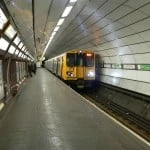- 2 Minute Read
- 20th November 2008
Edinburgh City Guide
Population & Landmark…
Edinburgh is the capital of Scotland. The city is the second largest conurbation after Glasgow which is 45 miles away. It has been the Scottish capital since 1437 and is the seat of the Scottish Parliament. The Old town and New Town districts of the city are listed as a UNESCO World Heritage site since 1995. There are over 4500 listed buildings within the city.
The current population is 450,000 and is expected to grow by 50,000 over the next 10 years. The population rises to 1 million during the famous August festivals. The City is recognised and consistently ranked one of the best locations internationally to live.
Economy…
 Edinburgh has the strongest economy of any city in the UK outside London. The economy of Edinburgh has recently been announced as one of the fastest growing city regions in Europe.
Edinburgh has the strongest economy of any city in the UK outside London. The economy of Edinburgh has recently been announced as one of the fastest growing city regions in Europe.
The economy of Edinburgh is largely based around the services sector, mainly banking, financial services and tourism. Banking has been a part of the economic life of the city for over 300 years, with the establishment of the Bank of Scotland. Today, Edinburgh has emerged as Europe’s sixth largest financial centre.
The Bank of Scotland, headquartered in Edinburgh, is the fifth largest bank in the world, opened new headquarters at Gogarburn in the west of the city and a registered office in St. Andrew Square.
Office Rental Levels…
 The start of 2008 has been positive as regards to office space. Cushman & Wakefield has announced that the take up of office space was over 200,000 square feet in the last 3 months.
The start of 2008 has been positive as regards to office space. Cushman & Wakefield has announced that the take up of office space was over 200,000 square feet in the last 3 months.
According to CB Richard Ellis, there is still 2.4 million square feet of office space available in Edinburgh. However, there is apparently a shortage of small office space in the capital.
With the current economic situation, it seems that the take up of larger tenancies has declined and that the vast majority of smaller office locations have been occupied. However, business centre operators’ buildings opening up this year should be the answer the high demand for grade B offices, which is suitable for SME’s who have smaller budgets as well as corporate and other businesses willing to downsize during the credit crunch.
Transport…
 Edinburgh has two mainline stations, Haymarket and Waterley. The main station is Waterley, located in the city centre, between Edinburgh Old Town and the New Town. The two main train stations are Waverley station, Edinburgh’s mainline station, and Haymarket station, Edinburgh’s original second mainline station.
Edinburgh has two mainline stations, Haymarket and Waterley. The main station is Waterley, located in the city centre, between Edinburgh Old Town and the New Town. The two main train stations are Waverley station, Edinburgh’s mainline station, and Haymarket station, Edinburgh’s original second mainline station.
The city also has an airport 20 minutes away from the city centre. There are regular bus services to and from the airport. A typical flight between Edinburgh and London would take approximately 40 minutes.
The Tourism, Attractiveness of the city…
 The city is one of Europe’s major tourist destinations, attracting over 13 million visitors each year, and is the second most visited city in the UK, after London.
The city is one of Europe’s major tourist destinations, attracting over 13 million visitors each year, and is the second most visited city in the UK, after London.
Edinburgh is well-known for the annual Edinburgh Festival, a collection of official and independent festivals held annually over about four weeks from early August. The number of visitors attracted to Edinburgh for the Festival is roughly equal to the settled population of the city. The most famous of these events are the Edinburgh Fringe (the largest performing arts festival in the world), the Edinburgh Comedy Festival (the largest comedy festival in the world), the Edinburgh International Festival, the Edinburgh Military Tattoo, the Edinburgh International Film Festival, and the Edinburgh International Book Festival.
Useful Links…
Edinburgh Guide: www.cityguide.travel-guides.com
Edinburgh City Council: www.edinburgh.gov.uk
Citizen’s Advise Bureau: www.citizensadviceedinburgh.co.uk
